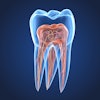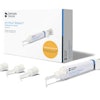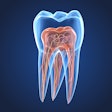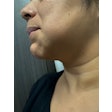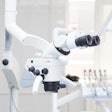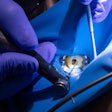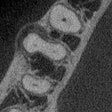Neurons inside teeth not only sense pain, but they may help protect them from sustaining further damage by triggering a jaw-opening reflex, according to new research from the University of Michigan (U-M).
Furthermore, sensory neurons known as intradental high-threshold mechanoreceptors (HTMRs) detect tooth damage and quickly signal the brain to trigger a protective response, according to a university news release dated July 25.
“Our study challenges the prior assumption that nerves inside the tooth primarily function to elicit pain and force us straight to the dentist for help,” Dr. Joshua Emrick, PhD, assistant professor at the U-M School of Dentistry and lead author of the study, said in the release.
Reflexes cause the lower jaw to open in response to certain stimuli, but the cellular origin of this reflex has been unclear. This study revealed that sensory neurons inside teeth do more than transmit pain. They also help trigger this jaw-opening reflex, according to the release.
The findings highlight the critical role healthy, active nerves play in protecting teeth from further damage. Using real-time observation, the research team studied how nerve cells in the molars of mouse models responded to stimulation.
Specialized sensory neurons intradental HTMRs play a key role in detecting tooth damage. These neurons quickly signal the brain, prompting a reaction within five to 15 ms, according to the release.
When enamel or dentin is compromised, these neurons fire and cause both pain and a reflexive jaw-opening response. While the study focused on dental tissue, the researchers believe HTMRs may play a protective role in other areas of the body as well.
Future research can explore how these neurons operate across different tissues, according to the release.
“Much remains to be discovered regarding how sensory neurons function within individual tissues, especially internal ones such as the teeth,” Elizabeth Ronan, another study lead author and postdoctoral fellow at the U-M School of Dentistry, said in the release.


